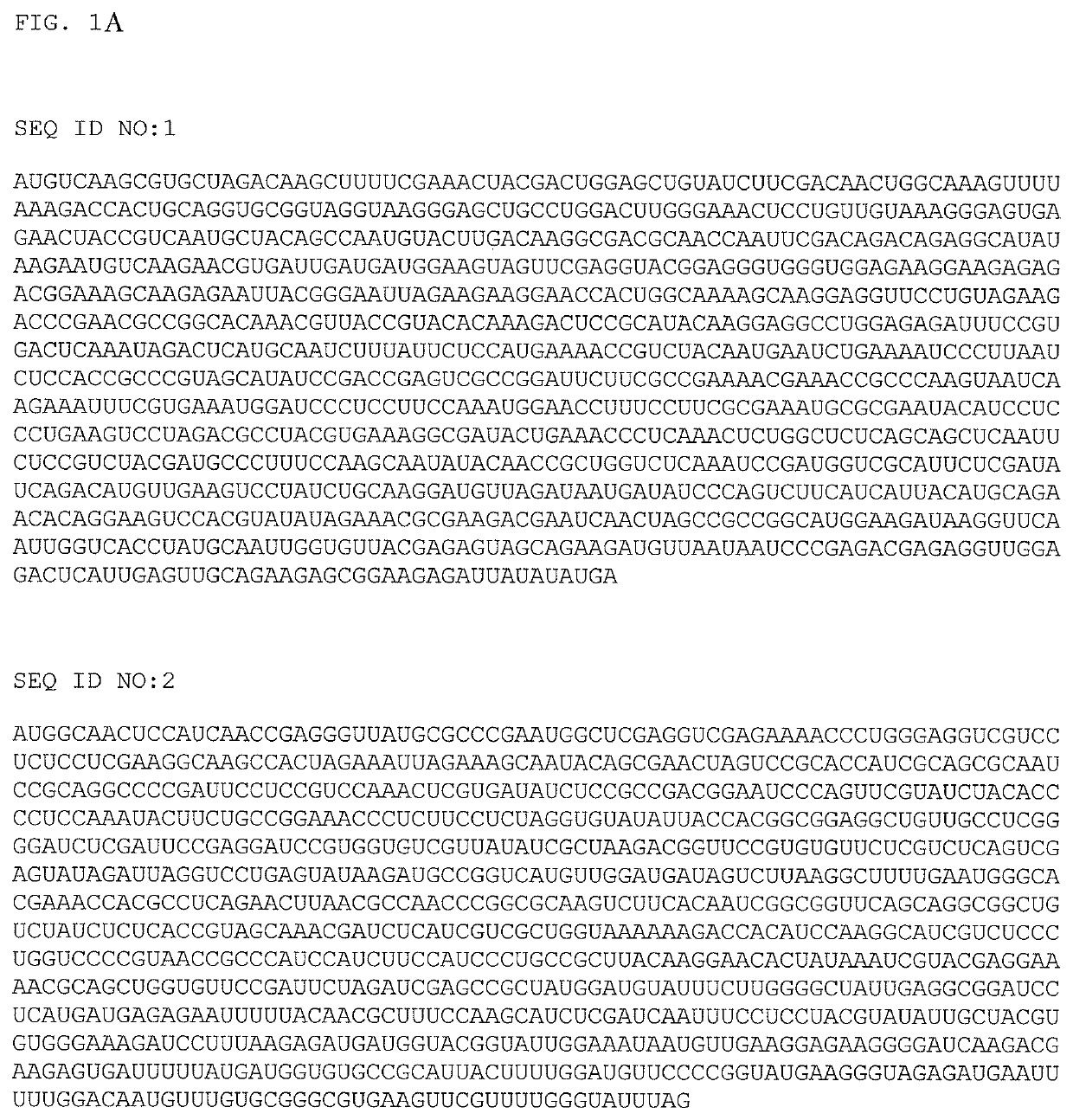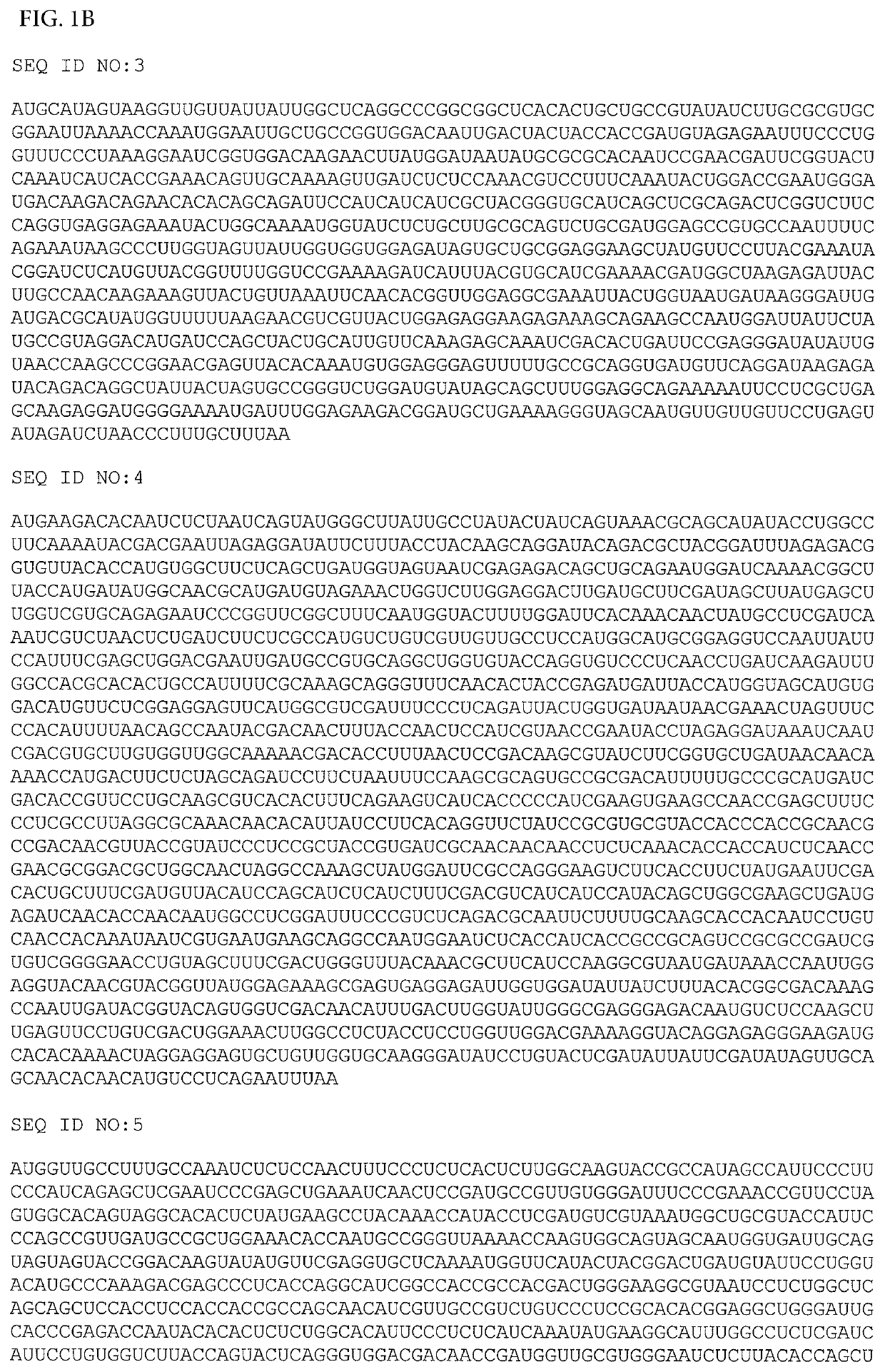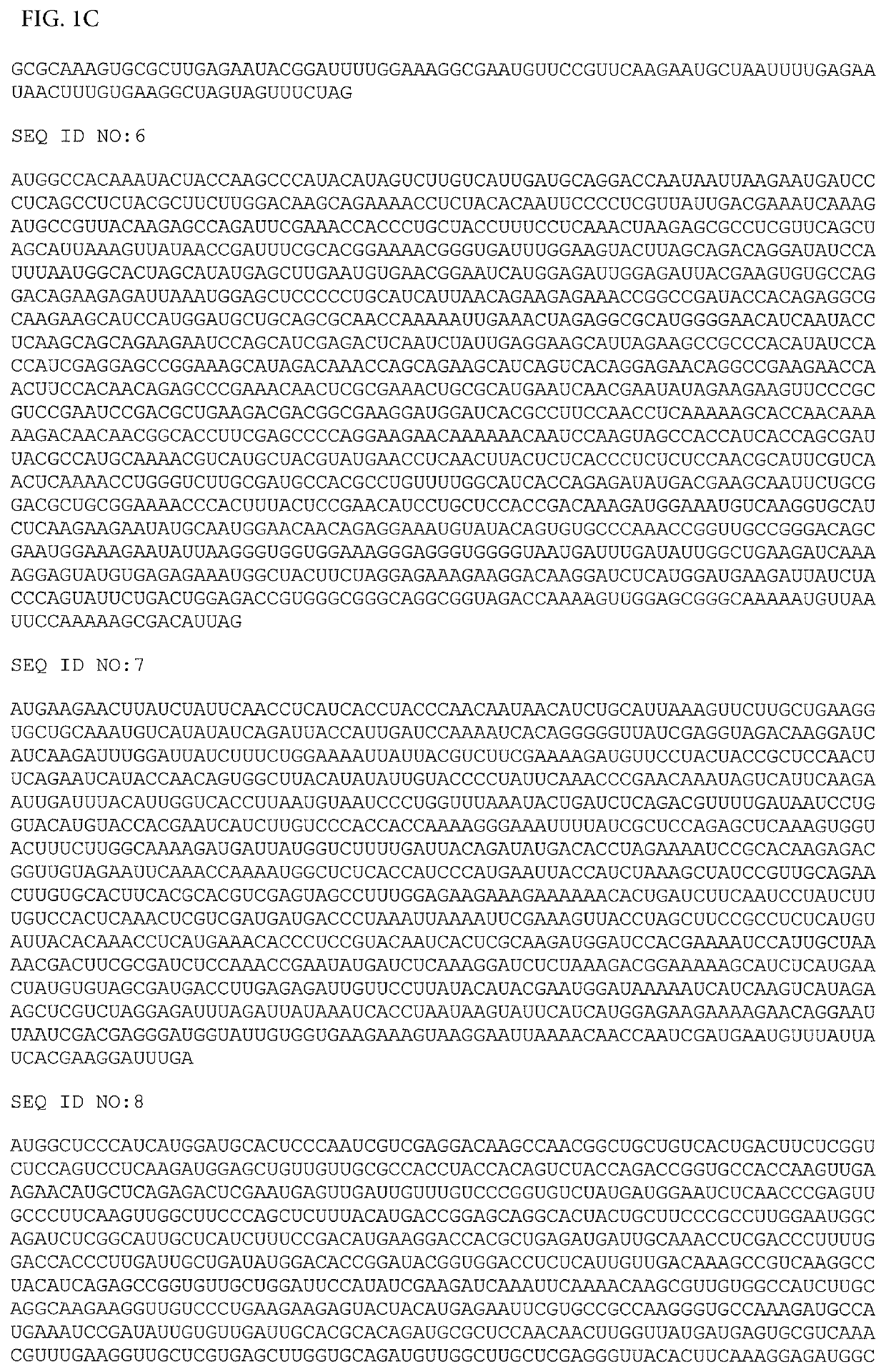Plants and methods for controlling fungal plant pathogens
a technology for fungal plant pathogens and plants, applied in the field of plants and methods for controlling fungal plant pathogens, can solve the problems of insufficient methods for controlling disease, and achieve the effect of reducing the expression of the coding region
- Summary
- Abstract
- Description
- Claims
- Application Information
AI Technical Summary
Benefits of technology
Problems solved by technology
Method used
Image
Examples
example 1
[0067]A technology that could provide a suite of new options to control Sclerotinia is RNA interference (RNAi). RNAi is a sequence-specific method of reducing or silencing a gene's expression following the introduction of double-stranded RNAs (dsRNAs) into a cell. Once within the cell, the dsRNA mediates the destruction of any RNA with identical sequence, thereby silencing the gene's expression. Using bioinformatics tools, it is possible to design dsRNAs to selectively target just one gene in an organism, and also design dsRNA to target only one species or alternatively, a group of related species. With its incredible ability to silence a gene's expression, RNAi is being considered for a great many applications, including a variety of crop protection technologies [6]. We have previously developed transgenic plants that expressed species-specific insecticidal dsRNAs that targeted genes essential to the insects' growth, and thereby killed insects that fed on the plants [7]. Because of...
example 2
[0098]Other targets for RNA interference were evaluated as described in Example 1. The following coding regions, when targeted for decreased expression, were found to result in reduced growth of S. sclerotiorum: XM_001591197.1 (SS1G_07873, SEQ ID NO:42), XM_001590273.1 (SS1G_09088, SEQ ID NO:43), XM_001596198.1 (SS1G j2468, SEQ ID NO:44), XM_001587661.1 (SS1G_11704, SEQ ID NO:45), XM_001596446.1 (SS1G 02716, SEQ ID NO:46), XM_001586961.1 (SS1G_12040, SEQ ID NO:47), XM_001589214.1 (SS1G j9897, SEQ ID NO:48), XM_001592927.1 (SS1G_05899, SEQ ID NO:49), XM_001592197.1 (SS1G j6487, SEQ ID NO:50), XM_001597459.1 (SS1G j1703, SEQ ID NO:51), XM_001596225.1 (SS1G_02495, SEQ ID NO:52), XM_001586833.1 (SS1G_11912, SEQ ID NO:53), XM_001589938.1 (SS1G j8752, SEQ ID NO:54), XM j01588858.1 (SS1G_10456, SEQ ID NO:55), XM_001588798.1 (SS1G_10396, SEQ ID NO:56), XM_001594135.1 (SS1G_03992, SEQ ID NO:57), XM_001586701.1 (SS1G_11780, SEQ ID NO:58), XM_001591282.1 (SS1G_07958, SEQ ID NO:59), XM_00159418...
PUM
| Property | Measurement | Unit |
|---|---|---|
| diameter | aaaaa | aaaaa |
| time | aaaaa | aaaaa |
| time | aaaaa | aaaaa |
Abstract
Description
Claims
Application Information
 Login to View More
Login to View More - R&D Engineer
- R&D Manager
- IP Professional
- Industry Leading Data Capabilities
- Powerful AI technology
- Patent DNA Extraction
Browse by: Latest US Patents, China's latest patents, Technical Efficacy Thesaurus, Application Domain, Technology Topic, Popular Technical Reports.
© 2024 PatSnap. All rights reserved.Legal|Privacy policy|Modern Slavery Act Transparency Statement|Sitemap|About US| Contact US: help@patsnap.com










